
Practical Network Automation
¥71.93
Leverage the power of Python, Ansible and other network automation tools to make your network robust and more secure Key Features *Get introduced to the concept of network automation with relevant use cases *Apply Continuous Integration and DevOps to improve your network performance *Implement effective automation using tools such as Python, Ansible, and more Book Description Network automation is the use of IT controls to supervise and carry out everyday network management functions. It plays a key role in network virtualization technologies and network functions. The book starts by providing an introduction to network automation, and its applications, which include integrating DevOps tools to automate the network efficiently. It then guides you through different network automation tasks and covers various data digging and performing tasks such as ensuring golden state configurations using templates, interface parsing. This book also focuses on Intelligent Operations using Artificial Intelligence and troubleshooting using chatbots and voice commands. The book then moves on to the use of Python and the management of SSH keys for machine-to-machine (M2M) communication, all followed by practical use cases. The book also covers the importance of Ansible for network automation, including best practices in automation; ways to test automated networks using tools such as Puppet, SaltStack, and Chef; and other important techniques. Through practical use-cases and examples, this book will acquaint you with the various aspects of network automation. It will give you the solid foundation you need to automate your own network without any hassle. What you will learn *Get started with the fundamental concepts of network automation *Perform intelligent data mining and remediation based on triggers *Understand how AIOps works in operations *Trigger automation through data factors *Improve your data center's robustness and security through data digging *Get access infrastructure through API Framework for chatbot and voice interactive troubleshootings *Set up communication with SSH-based devices using Netmiko Who this book is for If you are a network engineer or a DevOps professional looking for an extensive guide to help you automate and manage your network efficiently, then this book is for you. No prior experience with network automation is required to get started, however you will need some exposure to Python programming to get the most out of this book.

DevOps with Kubernetes
¥90.46
Leverage the power of Kubernetes to build an efficient software delivery pipeline. Key Features * Learn about DevOps, containers, and Kubernetes all within one handy book * A practical guide to container management and orchestration * Learn how to monitor, log, and troubleshoot your Kubernetes applications Book Description Kubernetes has been widely adopted across public clouds and on-premise data centers. As we're living in an era of microservices, knowing how to use and manage Kubernetes is an essential skill for everyone in the IT industry. This book is a guide to everything you need to know about Kubernetes—from simply deploying a container to administrating Kubernetes clusters wisely. You'll learn about DevOps fundamentals, as well as deploying a monolithic application as microservices and using Kubernetes to orchestrate them. You will then gain an insight into the Kubernetes network, extensions, authentication and authorization. With the DevOps spirit in mind, you'll learn how to allocate resources to your application and prepare to scale them efficiently. Knowing the status and activity of the application and clusters is crucial, so we’ll learn about monitoring and logging in Kubernetes. Having an improved ability to observe your services means that you will be able to build a continuous delivery pipeline with confidence. At the end of the book, you'll learn how to run managed Kubernetes services on three top cloud providers: Google Cloud Platform, Amazon Web Services, and Microsoft Azure. What you will learn * Learn fundamental and advanced DevOps skills and tools * Get a comprehensive understanding of containers * Dockerize an application * Administrate and manage Kubernetes cluster * Extend the cluster functionality with custom resources * Understand Kubernetes network and service mesh * Implement Kubernetes logging and monitoring * Manage Kubernetes services in Amazon Web Services, Google Cloud Platform,and Microsoft Azure Who this book is for This book is for anyone who wants to learn containerization and clustering in a practical way using Kubernetes. No prerequisite skills are required, however, essential DevOps skill and public/private Cloud knowledge will accelerate the reading speed. If you're advanced, you can get a deeper understanding of all the tools and technique described in the book.
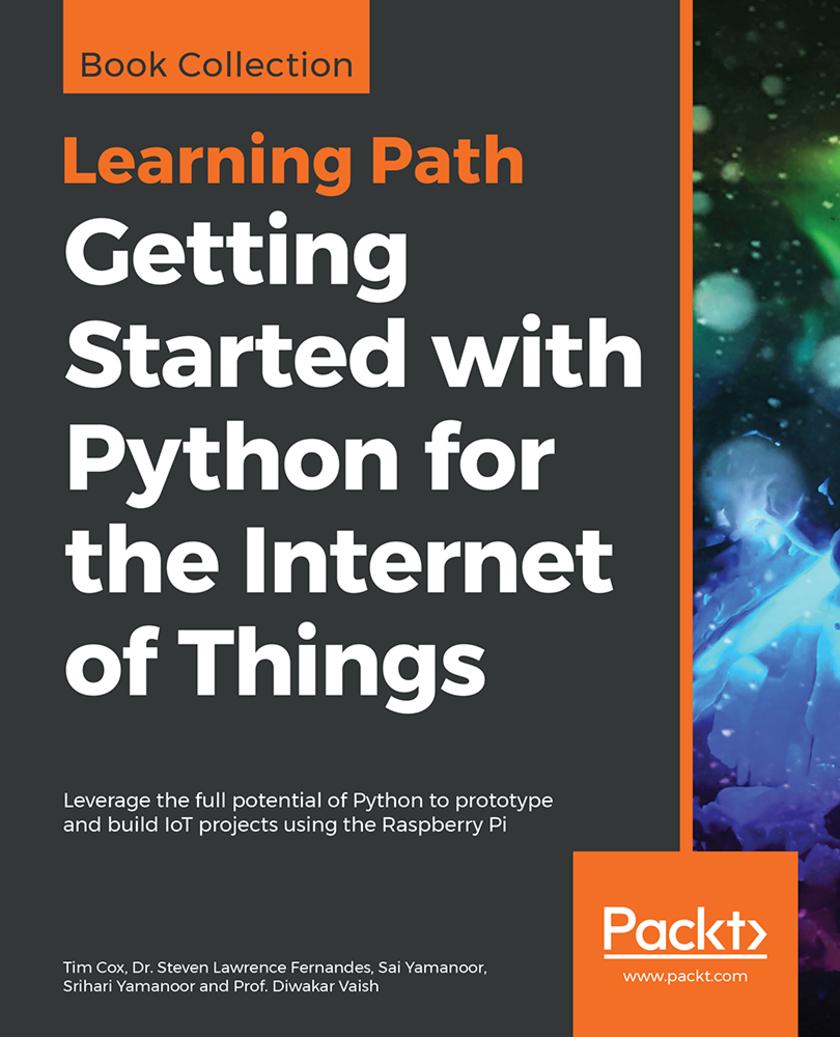
Getting Started with Python for the Internet of Things
¥90.46
Build clever, collaborative, and powerful automation systems with the Raspberry Pi and Python. Key Features * Create your own Pi-Rover or Pi-Hexipod robots * Develop practical applications in Python using Raspberry Pi * Build your own Jarvis, a highly advanced computerized AI Book Description This Learning Path takes you on a journey in the world of robotics and teaches you all that you can achieve with Raspberry Pi and Python. It teaches you to harness the power of Python with the Raspberry Pi 3 and the Raspberry Pi zero to build superlative automation systems that can transform your business. You will learn to create text classifiers, predict sentiment in words, and develop applications with the Tkinter library. Things will get more interesting when you build a human face detection and recognition system and a home automation system in Python, where different appliances are controlled using the Raspberry Pi. With such diverse robotics projects, you'll grasp the basics of robotics and its functions, and understand the integration of robotics with the IoT environment. By the end of this Learning Path, you will have covered everything from configuring a robotic controller, to creating a self-driven robotic vehicle using Python. * Raspberry Pi 3 Cookbook for Python Programmers - Third Edition by Tim Cox, Dr. Steven Lawrence Fernandes * Python Programming with Raspberry Pi by Sai Yamanoor, Srihari Yamanoor * Python Robotics Projects by Prof. Diwakar Vaish What you will learn * Build text classifiers and predict sentiment in words with the Tkinter library * Develop human face detection and recognition systems * Create a neural network module for optical character recognition * Build a mobile robot using the Raspberry Pi as a controller * Understand how to interface sensors, actuators, and LED displays work * Apply machine learning techniques to your models * Interface your robots with Bluetooth Who this book is for This Learning Path is specially designed for Python developers who want to take their skills to the next level by creating robots that can enhance people’s lives. Familiarity with Python and electronics will aid understanding the concepts in this Learning Path.
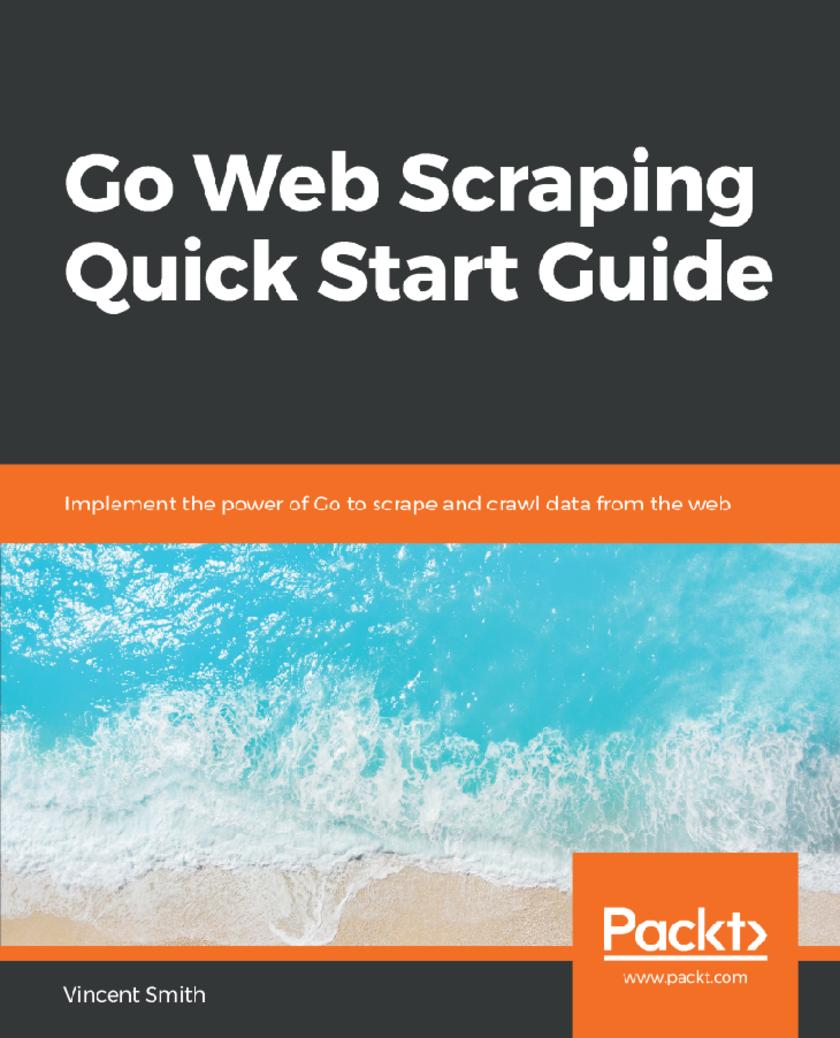
Go Web Scraping Quick Start Guide
¥45.77
Learn how some Go-specific language features help to simplify building web scrapers along with common pitfalls and best practices regarding web scraping. Key Features * Use Go libraries like Goquery and Colly to scrape the web * Common pitfalls and best practices to effectively scrape and crawl * Learn how to scrape using the Go concurrency model Book Description Web scraping is the process of extracting information from the web using various tools that perform scraping and crawling. Go is emerging as the language of choice for scraping using a variety of libraries. This book will quickly explain to you, how to scrape data data from various websites using Go libraries such as Colly and Goquery. The book starts with an introduction to the use cases of building a web scraper and the main features of the Go programming language, along with setting up a Go environment. It then moves on to HTTP requests and responses and talks about how Go handles them. You will also learn about a number of basic web scraping etiquettes. You will be taught how to navigate through a website, using a breadth-first and then a depth-first search, as well as find and follow links. You will get to know about the ways to track history in order to avoid loops and to protect your web scraper using proxies. Finally the book will cover the Go concurrency model, and how to run scrapers in parallel, along with large-scale distributed web scraping. What you will learn * Implement Cache-Control to avoid unnecessary network calls * Coordinate concurrent scrapers * Design a custom, larger-scale scraping system * Scrape basic HTML pages with Colly and JavaScript pages with chromedp * Discover how to search using the "strings" and "regexp" packages * Set up a Go development environment * Retrieve information from an HTML document * Protect your web scraper from being blocked by using proxies * Control web browsers to scrape JavaScript sites Who this book is for Data scientists, and web developers with a basic knowledge of Golang wanting to collect web data and analyze them for effective reporting and visualization.
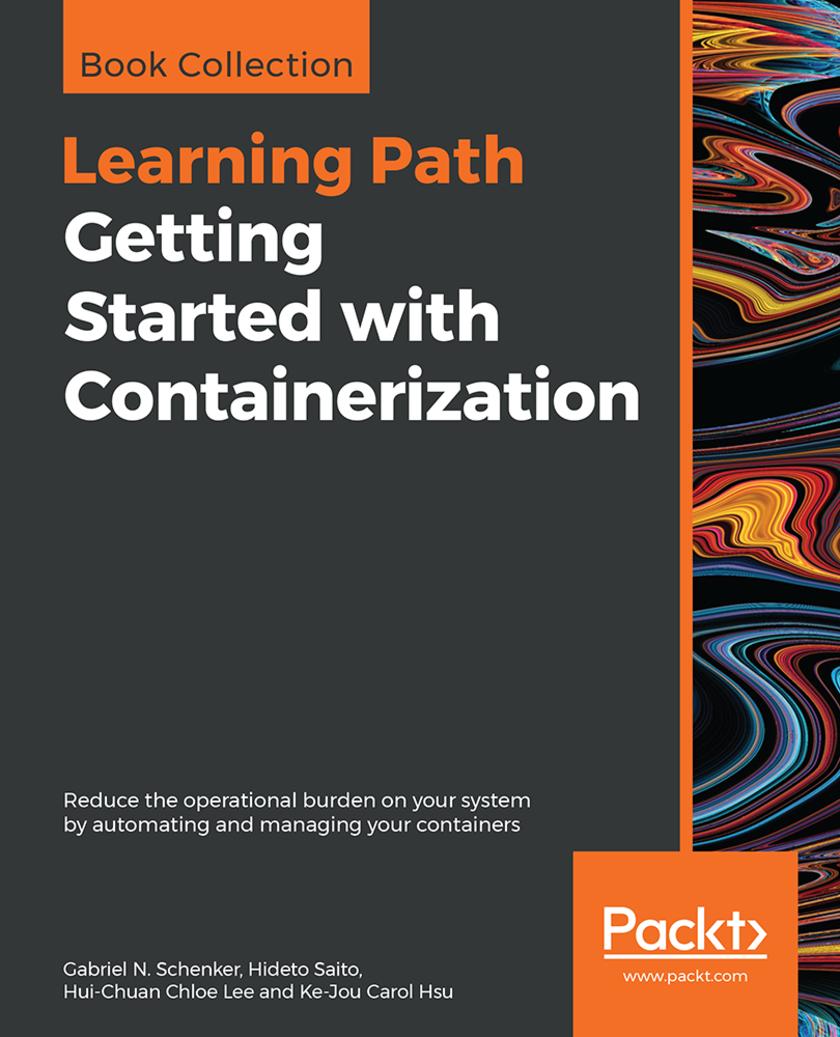
Getting Started with Containerization
¥90.46
Choose the smarter way to learn about containerizing your applications and running them in production. Key Features * Deploy and manage highly scalable, containerized applications with Kubernetes * Build high-availability Kubernetes clusters * Secure your applications via encapsulation, networks, and secrets Book Description Kubernetes is an open source orchestration platform for managing containers in a cluster environment. This Learning Path introduces you to the world of containerization, in addition to providing you with an overview of Docker fundamentals. As you progress, you will be able to understand how Kubernetes works with containers. Starting with creating Kubernetes clusters and running applications with proper authentication and authorization, you'll learn how to create high-availability Kubernetes clusters on Amazon Web Services (AWS), and also learn how to use kubeconfig to manage different clusters. Whether it is learning about Docker containers and Docker Compose, or building a continuous delivery pipeline for your application, this Learning Path will equip you with all the right tools and techniques to get started with containerization. By the end of this Learning Path, you will have gained hands-on experience of working with Docker containers and orchestrators, including SwarmKit and Kubernetes. This Learning Path includes content from the following Packt products: * Kubernetes Cookbook - Second Edition by Hideto Saito, Hui-Chuan Chloe Lee, and Ke-Jou Carol Hsu * Learn Docker - Fundamentals of Docker 18.x by Gabriel N. Schenker What you will learn * Build your own container cluster * Run a highly distributed application with Docker Swarm or Kubernetes * Update or rollback a distributed application with zero downtime * Containerize your traditional or microservice-based application * Build a continuous delivery pipeline for your application * Track metrics and logs for every container in your cluster * Implement container orchestration to streamline deploying and managing applications Who this book is for This beginner-level Learning Path is designed for system administrators, operations engineers, DevOps engineers, and developers who want to get started with Docker and Kubernetes. Although no prior experience with Docker is required, basic knowledge of Kubernetes and containers will be helpful.

Advanced JavaScript
¥63.21
Gain a deeper understanding of JavaScript and apply it to build small applications in backend, frontend, and mobile frameworks. Key Features * Explore the new ES6 syntax, the event loop, and asynchronous programming * Learn the test-driven development approach when building apps * Master advanced JavaScript concepts to enhance your web developments skill Book Description If you are looking for a programming language to develop flexible and efficient applications, JavaScript is an obvious choice. Advanced JavaScript is a hands-on guide that takes you through JavaScript and its many features, one step at a time. You'll begin by learning how to use the new JavaScript syntax in ES6, and then work through the many other features that modern JavaScript has to offer. As you progress through the chapters, you’ll use asynchronous programming with callbacks and promises, handle browser events, and perform Document Object Model (DOM) manipulation. You'll also explore various methods of testing JavaScript projects. In the concluding chapters, you'll discover functional programming and learn to use it to build your apps. With this book as your guide, you'll also be able to develop APIs using Node.js and Express, create front-ends using React/Redux, and build mobile apps using React/Expo. By the end of Advanced JavaScript, you will have explored the features and benefits of JavaScript to build small applications. What you will learn * Examine major features in ES6 and implement those features to build applications * Create promise and callback handlers to work with asynchronous processes * Develop asynchronous flows using Promise chaining and async/await syntax * Manipulate the DOM with JavaScript * Handle JavaScript browser events * Explore Test Driven Development and build code tests with JavaScript code testing frameworks. * List the benefits and drawbacks of functional programming compared to other styles * Construct applications with the Node.js backend framework and the React frontend framework Who this book is for This book is designed to target anyone who wants to write JavaScript in a professional environment. We expect the audience to have used JavaScript in some capacity and be familiar with the basic syntax. This book would be good for a tech enthusiast wondering when to use generators or how to use Promises and Callbacks effectively, or a novice developer who wants to deepen their knowledge on JavaScript and understand TDD.
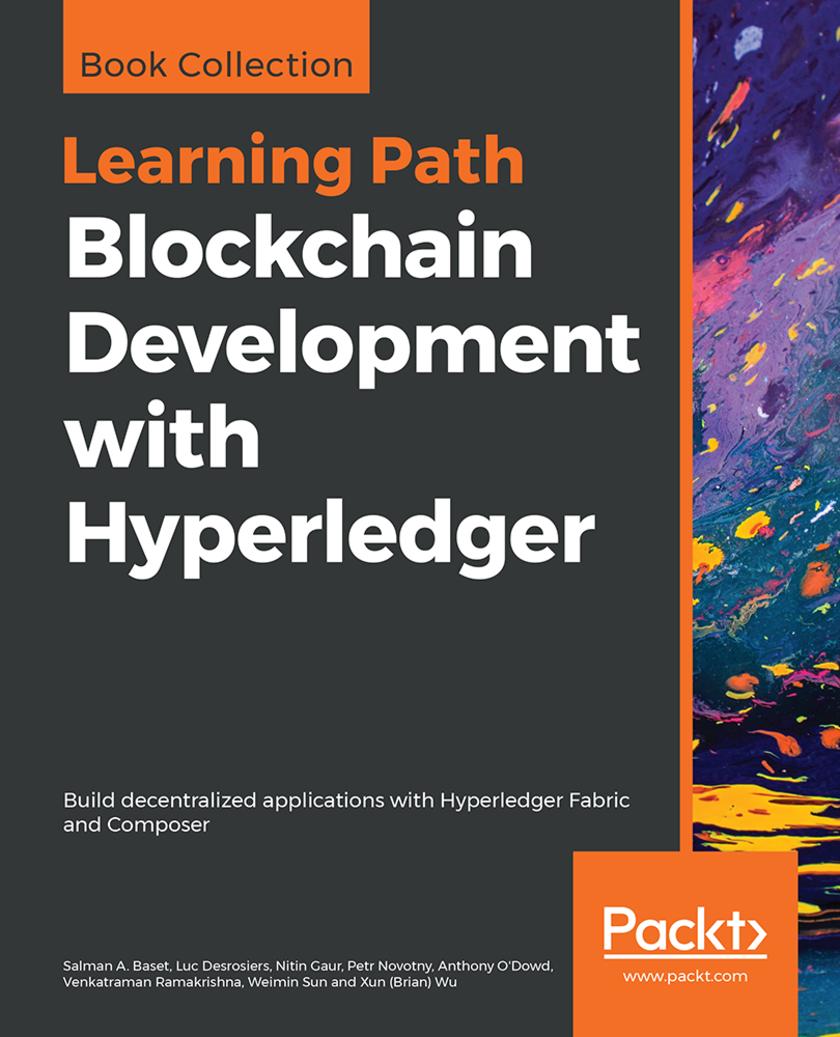
Blockchain Development with Hyperledger
¥90.46
Learn quick and effective techniques for developing blockchain-based distributed ledgers with ease Key Features * Discover why blockchain is a game changer in the technology landscape * Set up blockchain networks using Hyperledger Fabric * Write smart contracts at speed with Hyperledger Composer Book Description Blockchain and Hyperledger are open source technologies that power the development of decentralized applications. This Learning Path is your helpful reference for exploring and building blockchain networks using Ethereum, Hyperledger Fabric, and Hyperledger Composer. Blockchain Development with Hyperledger will start off by giving you an overview of blockchain and demonstrating how you can set up an Ethereum development environment for developing, packaging, building, and testing campaign-decentralized applications. You'll then explore the de facto language Solidity, which you can use to develop decentralized applications in Ethereum. Following this, you'll be able to configure Hyperledger Fabric and use it to build private blockchain networks and applications that connect to them. Toward the later chapters, you'll learn how to design and launch a network, and even implement smart contracts in chain code. By the end of this Learning Path, you'll be able to build and deploy your own decentralized applications by addressing the key pain points encountered in the blockchain life cycle. This Learning Path includes content from the following Packt products: * Blockchain Quick Start Guide by Xun (Brian) Wu and Weimin Sun * Hands-On Blockchain with Hyperledger by Nitin Gaur et al. What you will learn * Understand why decentralized applications are necessary * Develop and test a decentralized application with Hyperledger Fabric and Hyperledger Composer * Write and test a smart contract using Solidity * Design transaction models and chain code with Golang * Deploy the Composer REpresentational State Transfer (REST) Gateway to access Composer transactions * Maintain, monitor, and manage your blockchain solutions Who this book is for This Learning Path is designed for blockchain developers who want to build decentralized applications and smart contracts from scratch using Hyperledger. Basic familiarity with or exposure to any programming language will be useful to get started with this course.

Learning Android Forensics
¥81.74
A comprehensive guide to Android forensics, from setting up the workstation to analyzing key artifacts Key Features *Get up and running with modern mobile forensic strategies and techniques *Analyze the most popular Android applications using free and open source forensic tools *Learn malware detection and analysis techniques to investigate mobile cybersecurity incidents Book Description Many forensic examiners rely on commercial, push-button tools to retrieve and analyze data, even though there is no tool that does either of these jobs perfectly. Learning Android Forensics will introduce you to the most up-to-date Android platform and its architecture, and provide a high-level overview of what Android forensics entails. You will understand how data is stored on Android devices and how to set up a digital forensic examination environment. As you make your way through the chapters, you will work through various physical and logical techniques to extract data from devices in order to obtain forensic evidence. You will also learn how to recover deleted data and forensically analyze application data with the help of various open source and commercial tools. In the concluding chapters, you will explore malware analysis so that you’ll be able to investigate cybersecurity incidents involving Android malware. By the end of this book, you will have a complete understanding of the Android forensic process, you will have explored open source and commercial forensic tools, and will have basic skills of Android malware identification and analysis. What you will learn *Understand Android OS and architecture *Set up a forensics environment for Android analysis *Perform logical and physical data extractions *Learn to recover deleted data *Explore how to analyze application data *Identify malware on Android devices *Analyze Android malware Who this book is for If you are a forensic analyst or an information security professional wanting to develop your knowledge of Android forensics, then this is the book for you. Some basic knowledge of the Android mobile platform is expected.
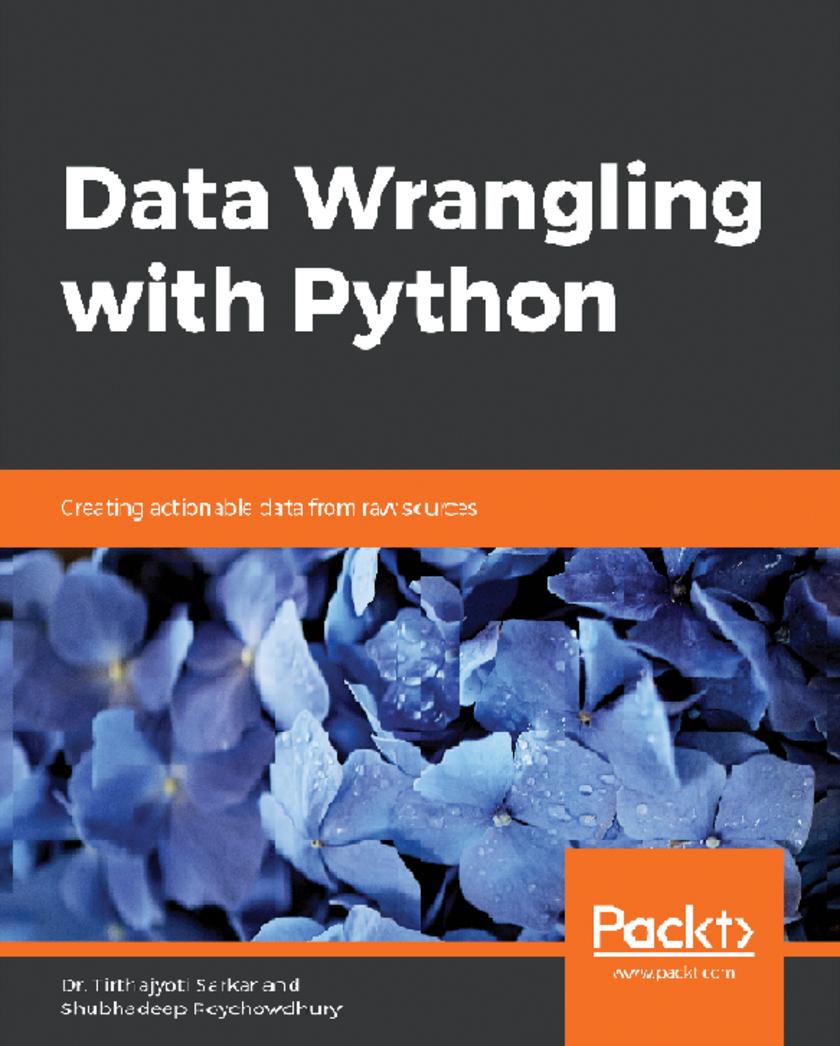
Data Wrangling with Python
¥73.02
Simplify your ETL processes with these hands-on data hygiene tips, tricks, and best practices. Key Features * Focus on the basics of data wrangling * Study various ways to extract the most out of your data in less time * Boost your learning curve with bonus topics like random data generation and data integrity checks Book Description For data to be useful and meaningful, it must be curated and refined. Data Wrangling with Python teaches you the core ideas behind these processes and equips you with knowledge of the most popular tools and techniques in the domain. The book starts with the absolute basics of Python, focusing mainly on data structures. It then delves into the fundamental tools of data wrangling like NumPy and Pandas libraries. You’ll explore useful insights into why you should stay away from traditional ways of data cleaning, as done in other languages, and take advantage of the specialized pre-built routines in Python. This combination of Python tips and tricks will also demonstrate how to use the same Python backend and extract/transform data from an array of sources including the Internet, large database vaults, and Excel financial tables. To help you prepare for more challenging scenarios, you’ll cover how to handle missing or wrong data, and reformat it based on the requirements from the downstream analytics tool. The book will further help you grasp concepts through real-world examples and datasets. By the end of this book, you will be confident in using a diverse array of sources to extract, clean, transform, and format your data efficiently. What you will learn * Use and manipulate complex and simple data structures * Harness the full potential of DataFrames and numpy.array at run time * Perform web scraping with BeautifulSoup4 and html5lib * Execute advanced string search and manipulation with RegEX * Handle outliers and perform data imputation with Pandas * Use descriptive statistics and plotting techniques * Practice data wrangling and modeling using data generation techniques Who this book is for Data Wrangling with Python is designed for developers, data analysts, and business analysts who are keen to pursue a career as a full-fledged data scientist or analytics expert. Although, this book is for beginners, prior working knowledge of Python is necessary to easily grasp the concepts covered here. It will also help to have rudimentary knowledge of relational database and SQL.
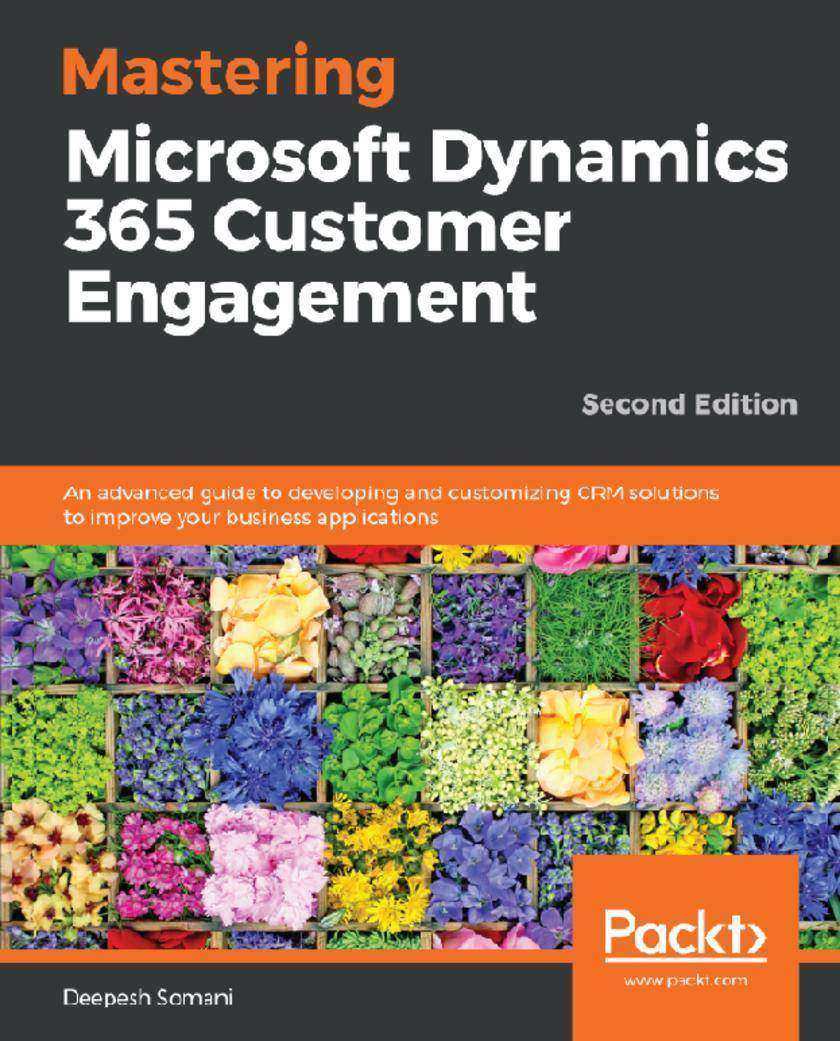
Mastering Microsoft Dynamics 365 Customer Engagement
¥90.46
A comprehensive guide packed with the latest features of Dynamics 365 for customer relationship management Key Features * Create efficient client-side apps and customized plugins that work seamlessly * Learn best practices from field experience to use Dynamics 365 efficiently * Unleash the power of Dynamics 365 to maximize your organization’s profits Book Description Microsoft Dynamics 365 is an all-in-one business management solution that's easy to use and adapt. It helps you connect your finances, sales, service, and operations to streamline business processes, improve customer interactions, and enable growth. This book gives you all the information you need to become an expert in MS Dynamics 365. This book starts with a brief overview of the functional features of Dynamics 365. You will learn how to create Word and Excel templates using CRM data to enable customized data analysis for your organization. This book helps you understand how to use Dynamics 365 as an XRM Framework, gain a deep understanding of client-side scripting in Dynamics 365, and create client-side applications using JavaScript and the Web API. In addition to this, you will discover how to customize Dynamics 365, and quickly move on to grasp the app structure, which helps you customize Dynamics 365 better. You will also learn how Dynamics 365 can be seamlessly embedded into various productivity tools to customize them for machine learning and contextual guidance. By the end of this book, you will have mastered utilizing Dynamics 365 features through real-world scenarios. What you will learn * Manage various divisions of your organization using Dynamics 365 customizations * Explore the XRM Framework and leverage its features * Provide an enhanced mobile and tablet experience * Develop client-side applications using JavaScript and the Web API * Understand how to develop plugins and workflows using Dynamics 365 * Explore solution framework improvements and new field types Who this book is for Mastering Microsoft Dynamics 365 Customer Engagement is for you if you have knowledge of Dynamics CRM and want to utilize the latest features of Dynamics 365. This book is also for you if you’re a skilled developer looking to move to the Microsoft stack to build business solution software. Extensive Dynamics CRM development experience will be beneficial to understand the concepts covered in this book.
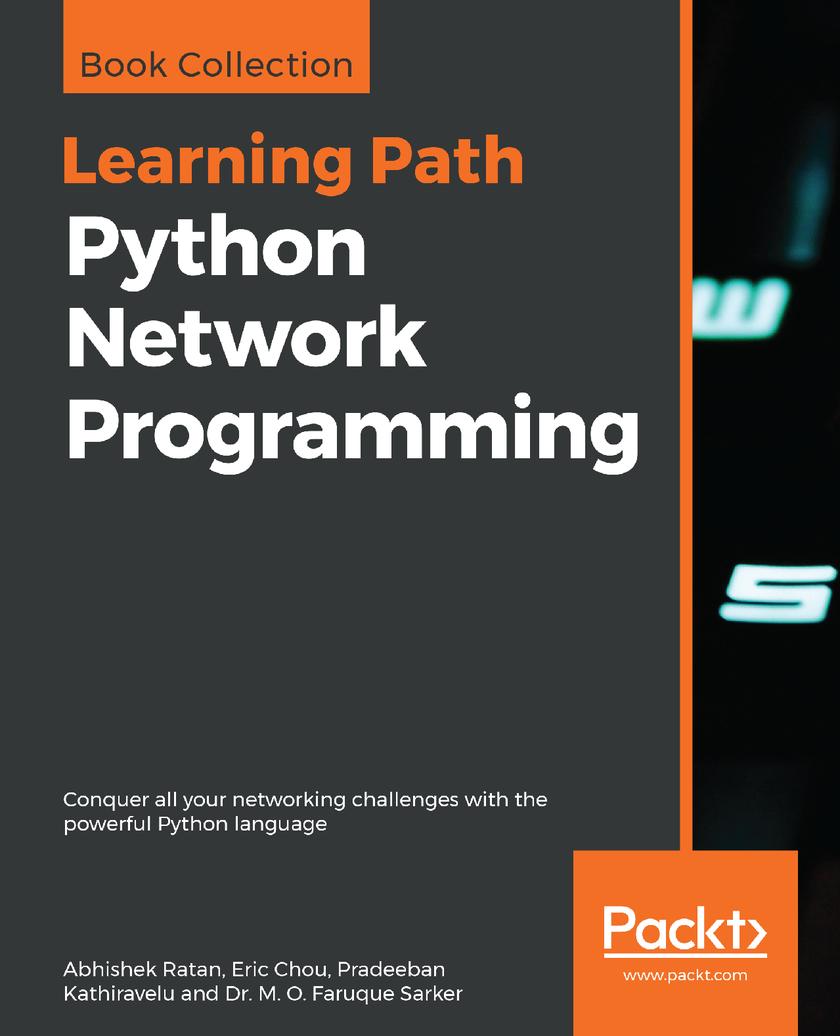
Python Network Programming
¥90.46
Power up your network applications with Python programming Key Features * Master Python skills to develop powerful network applications * Grasp the fundamentals and functionalities of SDN * Design multi-threaded, event-driven architectures for echo and chat servers Book Description This Learning Path highlights major aspects of Python network programming such as writing simple networking clients, creating and deploying SDN and NFV systems, and extending your network with Mininet. You’ll also learn how to automate legacy and the latest network devices. As you progress through the chapters, you’ll use Python for DevOps and open source tools to test, secure, and analyze your network. Toward the end, you'll develop client-side applications, such as web API clients, email clients, SSH, and FTP, using socket programming. By the end of this Learning Path, you will have learned how to analyze a network's security vulnerabilities using advanced network packet capture and analysis techniques. This Learning Path includes content from the following Packt products: * Practical Network Automation by Abhishek Ratan * Mastering Python Networking by Eric Chou * Python Network Programming Cookbook, Second Edition by Pradeeban Kathiravelu, Dr. M. O. Faruque Sarker What you will learn * Create socket-based networks with asynchronous models * Develop client apps for web APIs, including S3 Amazon and Twitter * Talk to email and remote network servers with different protocols * Integrate Python with Cisco, Juniper, and Arista eAPI for automation * Use Telnet and SSH connections for remote system monitoring * Interact with websites via XML-RPC, SOAP, and REST APIs * Build networks with Ryu, OpenDaylight, Floodlight, ONOS, and POX * Configure virtual networks in different deployment environments Who this book is for If you are a Python developer or a system administrator who wants to start network programming, this Learning Path gets you a step closer to your goal. IT professionals and DevOps engineers who are new to managing network devices or those with minimal experience looking to expand their knowledge and skills in Python will also find this Learning Path useful. Although prior knowledge of networking is not required, some experience in Python programming will be helpful for a better understanding of the concepts in the Learning Path.
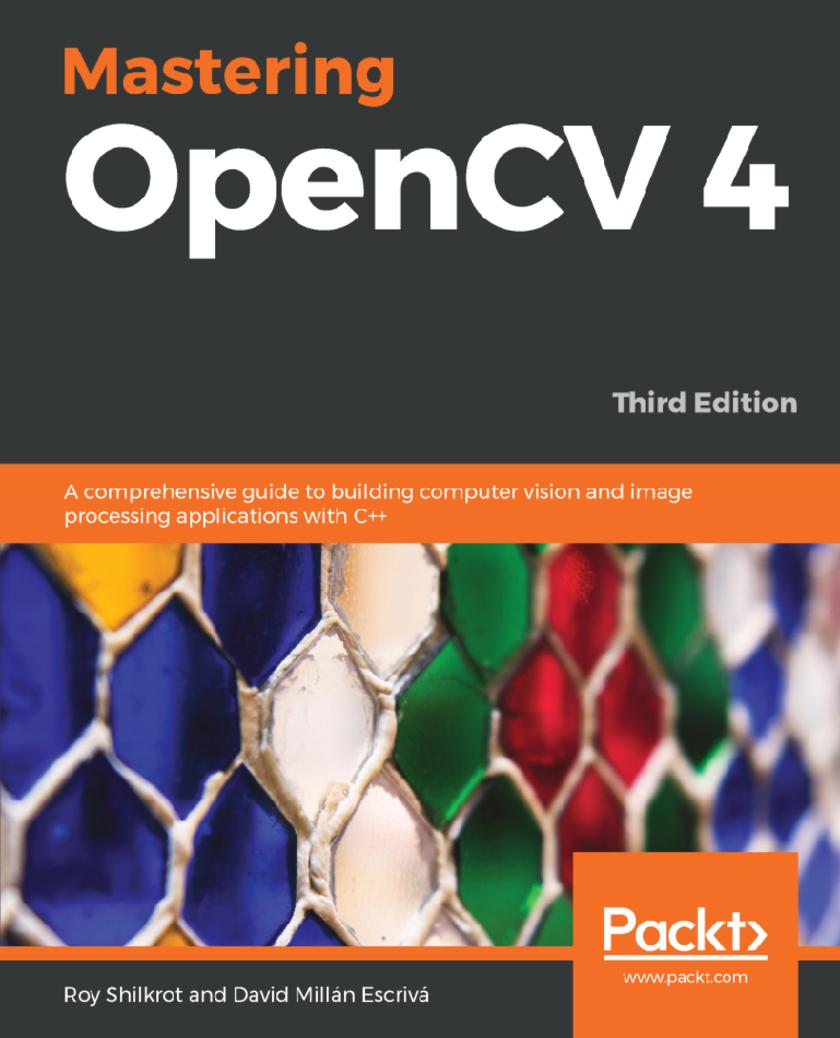
Mastering OpenCV 4
¥81.74
Work on practical computer vision projects covering advanced object detector techniques and modern deep learning and machine learning algorithms Key Features *Learn about the new features that help unlock the full potential of OpenCV 4 *Build face detection applications with a cascade classifier using face landmarks *Create an optical character recognition (OCR) model using deep learning and convolutional neural networks Book Description Mastering OpenCV, now in its third edition, targets computer vision engineers taking their first steps toward mastering OpenCV. Keeping the mathematical formulations to a solid but bare minimum, the book delivers complete projects from ideation to running code, targeting current hot topics in computer vision such as face recognition, landmark detection and pose estimation, and number recognition with deep convolutional networks. You’ll learn from experienced OpenCV experts how to implement computer vision products and projects both in academia and industry in a comfortable package. You’ll get acquainted with API functionality and gain insights into design choices in a complete computer vision project. You’ll also go beyond the basics of computer vision to implement solutions for complex image processing projects. By the end of the book, you will have created various working prototypes with the help of projects in the book and be well versed with the new features of OpenCV4. What you will learn *Build real-world computer vision problems with working OpenCV code samples *Uncover best practices in engineering and maintaining OpenCV projects *Explore algorithmic design approaches for complex computer vision tasks *Work with OpenCV’s most updated API (v4.0.0) through projects *Understand 3D scene reconstruction and Structure from Motion (SfM) *Study camera calibration and overlay AR using the ArUco Module Who this book is for This book is for those who have a basic knowledge of OpenCV and are competent C++ programmers. You need to have an understanding of some of the more theoretical/mathematical concepts, as we move quite quickly throughout the book.
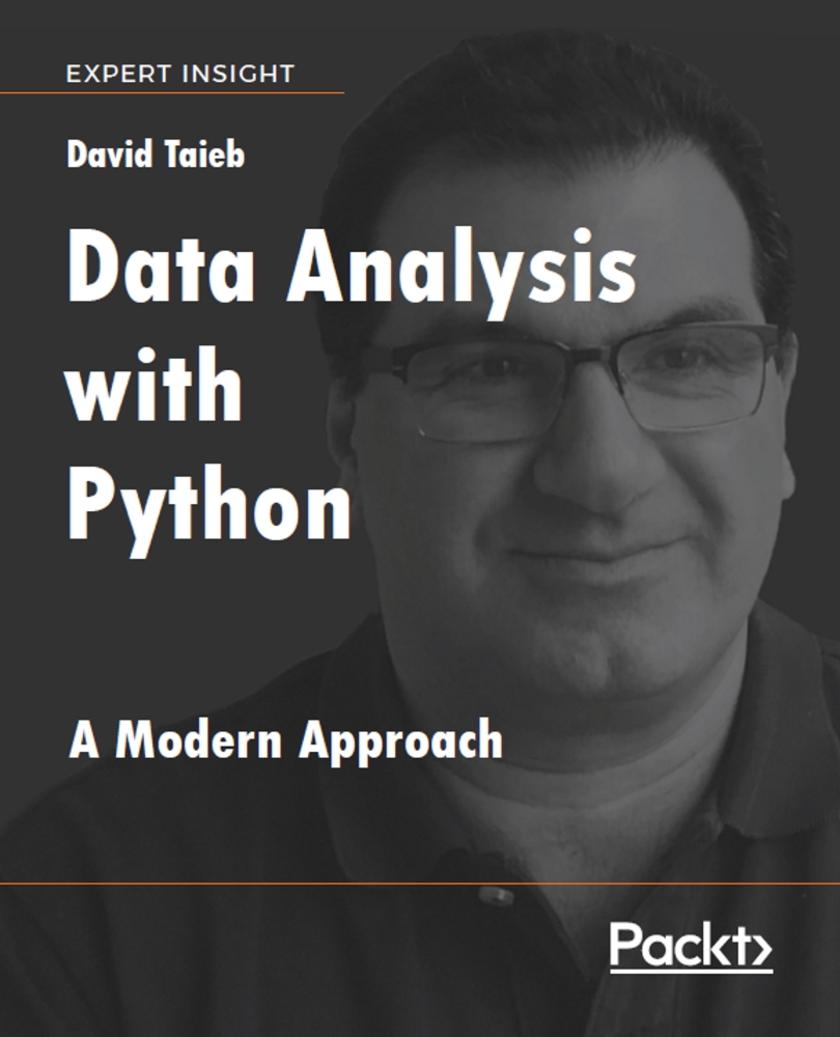
Data Analysis with Python
¥71.93
Learn a modern approach to data analysis using Python to harness the power of programming and AI across your data. Detailed case studies bring this modern approach to life across visual data, social media, graph algorithms, and time series analysis. Key Features *Bridge your data analysis with the power of programming, complex algorithms, and AI *Use Python and its extensive libraries to power your way to new levels of data insight *Work with AI algorithms, TensorFlow, graph algorithms, NLP, and financial time series *Explore this modern approach across with key industry case studies and hands-on projects Book Description Data Analysis with Python offers a modern approach to data analysis so that you can work with the latest and most powerful Python tools, AI techniques, and open source libraries. Industry expert David Taieb shows you how to bridge data science with the power of programming and algorithms in Python. You'll be working with complex algorithms, and cutting-edge AI in your data analysis. Learn how to analyze data with hands-on examples using Python-based tools and Jupyter Notebook. You'll find the right balance of theory and practice, with extensive code files that you can integrate right into your own data projects. Explore the power of this approach to data analysis by then working with it across key industry case studies. Four fascinating and full projects connect you to the most critical data analysis challenges you’re likely to meet in today. The first of these is an image recognition application with TensorFlow – embracing the importance today of AI in your data analysis. The second industry project analyses social media trends, exploring big data issues and AI approaches to natural language processing. The third case study is a financial portfolio analysis application that engages you with time series analysis - pivotal to many data science applications today. The fourth industry use case dives you into graph algorithms and the power of programming in modern data science. You'll wrap up with a thoughtful look at the future of data science and how it will harness the power of algorithms and artificial intelligence. What you will learn *A new toolset that has been carefully crafted to meet for your data analysis challenges *Full and detailed case studies of the toolset across several of today’s key industry contexts *Become super productive with a new toolset across Python and Jupyter Notebook *Look into the future of data science and which directions to develop your skills next Who this book is for This book is for developers wanting to bridge the gap between them and data scientists. Introducing PixieDust from its creator, the book is a great desk companion for the accomplished Data Scientist. Some fluency in data interpretation and visualization is assumed. It will be helpful to have some knowledge of Python, using Python libraries, and some proficiency in web development.
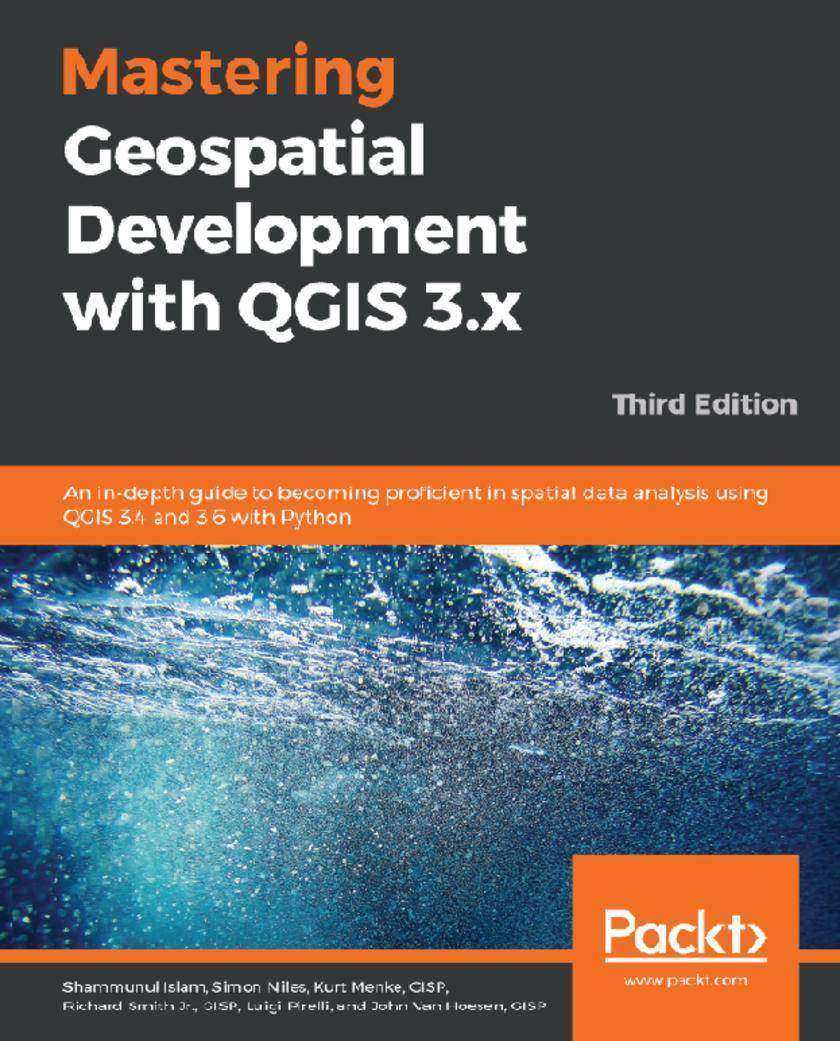
Mastering Geospatial Development with QGIS 3.x
¥73.02
Go beyond the basics and unleash the full power of QGIS 3.4 and 3.6 with practical, step-by-step examples Key Features * One-stop solution to all of your GIS needs * Master QGIS by learning about database integration, and geoprocessing tools * Learn about the new and updated Processing toolbox and perform spatial analysis Book Description QGIS is an open source solution to GIS and widely used by GIS professionals all over the world. It is the leading alternative to proprietary GIS software. Although QGIS is described as intuitive, it is also, by default, complex. Knowing which tools to use and how to apply them is essential to producing valuable deliverables on time. Starting with a refresher on the QGIS basics and getting you acquainted with the latest QGIS 3.6 updates, this book will take you all the way through to teaching you how to create a spatial database and a GeoPackage. Next, you will learn how to style raster and vector data by choosing and managing different colors. The book will then focus on processing raster and vector data. You will be then taught advanced applications, such as creating and editing vector data. Along with that, you will also learn about the newly updated Processing Toolbox, which will help you develop the advanced data visualizations. The book will then explain to you the graphic modeler, how to create QGIS plugins with PyQGIS, and how to integrate Python analysis scripts with QGIS. By the end of the book, you will understand how to work with all aspects of QGIS and will be ready to use it for any type of GIS work. What you will learn * Create and manage a spatial database * Get to know advanced techniques to style GIS data * Prepare both vector and raster data for processing * Add heat maps, live layer effects, and labels to your maps * Master LAStools and GRASS integration with the Processing Toolbox * Edit and repair topological data errors * Automate workflows with batch processing and the QGIS Graphical Modeler * Integrate Python scripting into your data processing workflows * Develop your own QGIS plugins Who this book is for If you are a GIS professional, a consultant, a student, or perhaps a fast learner who wants to go beyond the basics of QGIS, then this book is for you. It will prepare you to realize the full potential of QGIS.
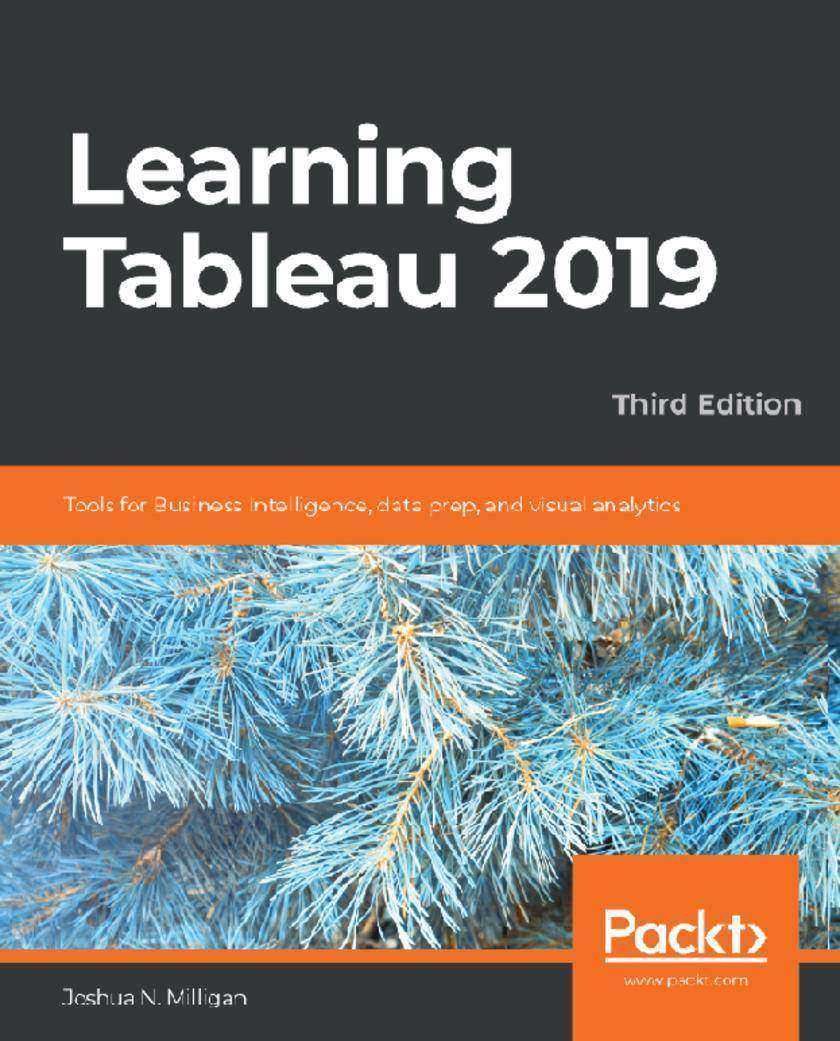
Learning Tableau 2019
¥73.02
Create powerful data visualizations and unlock intelligent business insights with Tableau Key Features * Explore all the latest Tableau 2019 features and redefine business analytics for your organization * Create impressive data visualizations and interactive dashboards to get insights from your data * Learn effective data storytelling to transform how your business leverages data and makes decisions Book Description Tableau is the gold standard of business intelligence and visual analytics tools in every industry. It enables rapid data visualization and interpretation with charts, graphs, dashboards, and much more. Updated with the latest features of Tableau, this book takes you from the foundations of the Tableau 2019 paradigm through to advanced topics. This third edition of the bestselling guide by Tableau Zen Master, Milligan, will help you come to grips with updated features, such as set actions and transparent views. Beginning with installation, you'll create your first visualizations with Tableau and then explore practical examples and advanced techniques. You'll create bar charts, tree maps, scatterplots, time series, and a variety of other visualizations. Next, you'll discover techniques to overcome challenges presented by data structure and quality and engage in effective data storytelling and decision making with business critical information. Finally, you'll be introduced to Tableau Prep, and learn how to use it to integrate and shape data for analysis. By the end of this book, you will be equipped to leverage the powerful features of Tableau 2019 for decision making. What you will learn * Develop stunning visualizations that explain complexity with clarity * Explore the exciting new features of Tableau Desktop and Tableau Prep * Connect to various data sources to bring all your data together * Uncover techniques to prep and structure your data for easy analysis * Create and use calculations to solve problems and enrich analytics * Master advanced topics such as sets, LOD calcs, and much more * Enable smart decisions with clustering, distribution, and forecasting * Share your data stories to build a culture of trust and action Who this book is for This Tableau book is for anyone who wants to understand data. If you’re new to Tableau, don’t worry. This book builds on the foundations to help you understand how Tableau really works and then builds on that knowledge with practical examples before moving on to advanced techniques. Working experience with databases will be useful but is not necessary to get the most out of this book.
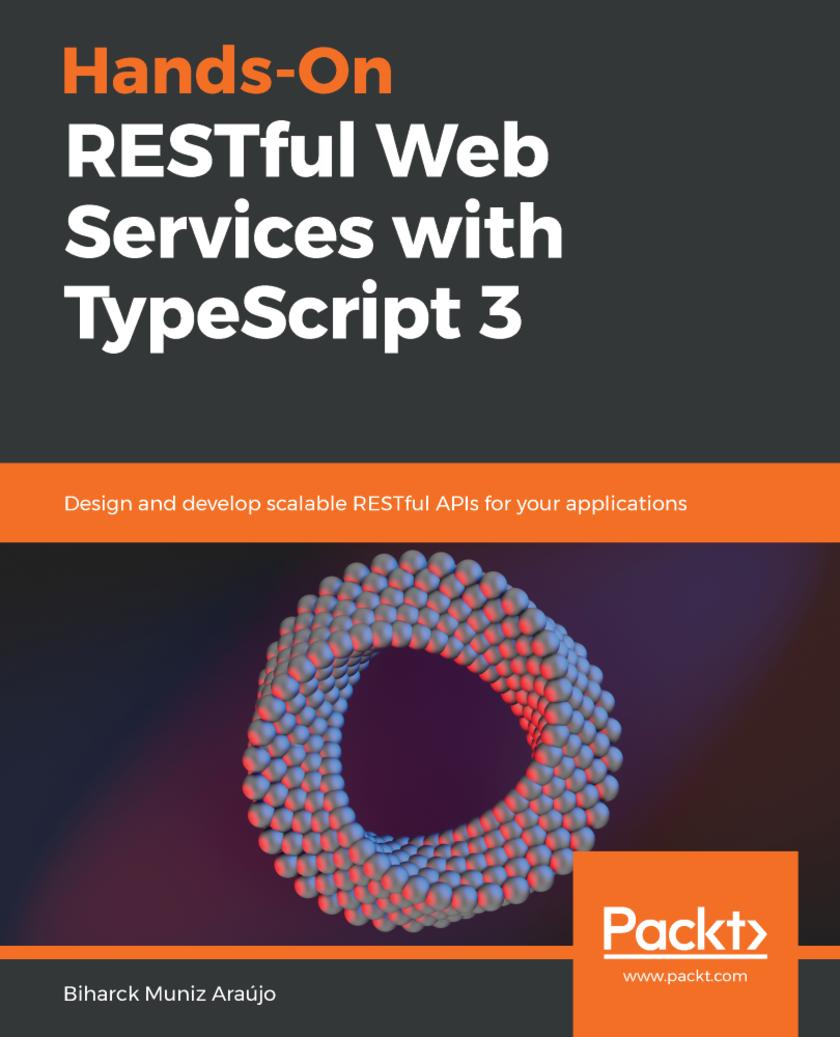
Hands-On RESTful Web Services with TypeScript 3
¥73.02
A step-by-step guide that will help you design, develop, scale, and deploy RESTful APIs with TypeScript 3 and Node.js Key Features * Gain in-depth knowledge of OpenAPI and Swagger to build scalable web services * Explore a variety of test frameworks and test runners such as Stryker, Mocha, and Chai * Create a pipeline by Dockerizing your environment using Travis CI, Google Cloud Platform, and GitHub Book Description In the world of web development, leveraging data is the key to developing comprehensive applications, and RESTful APIs help you to achieve this systematically. This book will guide you in designing and developing web services with the power of TypeScript 3 and Node.js. You'll design REST APIs using best practices for request handling, validation, authentication, and authorization. You'll also understand how to enhance the capabilities of your APIs with ODMs, databases, models and views, as well as asynchronous callbacks. This book will guide you in securing your environment by testing your services and initiating test automation with different testing approaches. Furthermore, you'll get to grips with developing secure, testable, and more efficient code, and be able to scale and deploy TypeScript 3 and Node.js-powered RESTful APIs on cloud platforms such as the Google Cloud Platform. Finally, the book will help you explore microservices and give you an overview of what GraphQL can allow you to do. By the end of this book, you will be able to use RESTful web services to create your APIs for mobile and web apps and other platforms. What you will learn * Explore various methods to plan your services in a scalable way * Understand how to handle different request types and the response status code * Get to grips with securing web services * Delve into error handling and logging your web services for improved debugging * Uncover the microservices architecture and GraphQL * Create automated CI/CD pipelines for release and deployment strategies Who this book is for If you’re a developer who has a basic understanding of REST concepts and want to learn how to design and develop RESTful APIs, this book is for you. Prior knowledge of TypeScript will help you make the most out of this book.

Generative Adversarial Networks Cookbook
¥81.74
Simplify next-generation deep learning by implementing powerful generative models using Python, TensorFlow and Keras Key Features *Understand the common architecture of different types of GANs *Train, optimize, and deploy GAN applications using TensorFlow and Keras *Build generative models with real-world data sets, including 2D and 3D data Book Description Developing Generative Adversarial Networks (GANs) is a complex task, and it is often hard to find code that is easy to understand. This book leads you through eight different examples of modern GAN implementations, including CycleGAN, simGAN, DCGAN, and 2D image to 3D model generation. Each chapter contains useful recipes to build on a common architecture in Python, TensorFlow and Keras to explore increasingly difficult GAN architectures in an easy-to-read format. The book starts by covering the different types of GAN architecture to help you understand how the model works. This book also contains intuitive recipes to help you work with use cases involving DCGAN, Pix2Pix, and so on. To understand these complex applications, you will take different real-world data sets and put them to use. By the end of this book, you will be equipped to deal with the challenges and issues that you may face while working with GAN models, thanks to easy-to-follow code solutions that you can implement right away. What you will learn *Structure a GAN architecture in pseudocode *Understand the common architecture for each of the GAN models you will build *Implement different GAN architectures in TensorFlow and Keras *Use different datasets to enable neural network functionality in GAN models *Combine different GAN models and learn how to fine-tune them *Produce a model that can take 2D images and produce 3D models *Develop a GAN to do style transfer with Pix2Pix Who this book is for This book is for data scientists, machine learning developers, and deep learning practitioners looking for a quick reference to tackle challenges and tasks in the GAN domain. Familiarity with machine learning concepts and working knowledge of Python programming language will help you get the most out of the book.
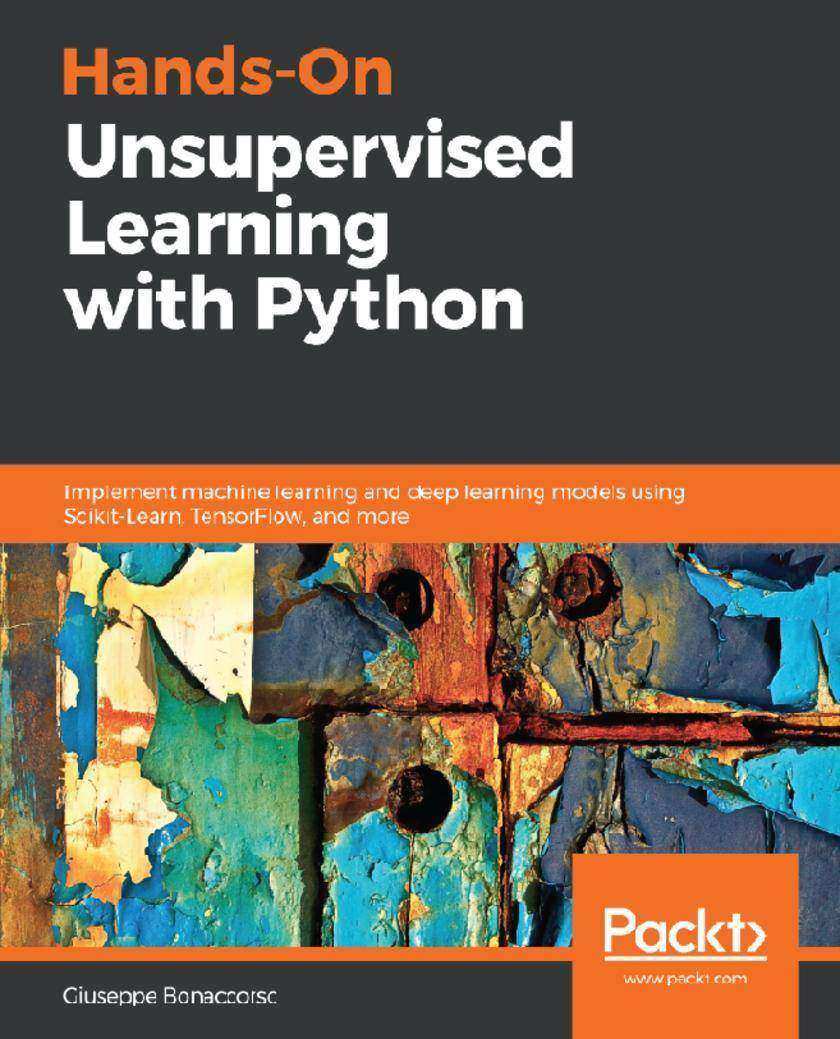
Hands-On Unsupervised Learning with Python
¥81.74
Discover the skill-sets required to implement various approaches to Machine Learning with Python Key Features * Explore unsupervised learning with clustering, autoencoders, restricted Boltzmann machines, and more * Build your own neural network models using modern Python libraries * Practical examples show you how to implement different machine learning and deep learning techniques Book Description Unsupervised learning is about making use of raw, untagged data and applying learning algorithms to it to help a machine predict its outcome. With this book, you will explore the concept of unsupervised learning to cluster large sets of data and analyze them repeatedly until the desired outcome is found using Python. This book starts with the key differences between supervised, unsupervised, and semi-supervised learning. You will be introduced to the best-used libraries and frameworks from the Python ecosystem and address unsupervised learning in both the machine learning and deep learning domains. You will explore various algorithms, techniques that are used to implement unsupervised learning in real-world use cases. You will learn a variety of unsupervised learning approaches, including randomized optimization, clustering, feature selection and transformation, and information theory. You will get hands-on experience with how neural networks can be employed in unsupervised scenarios. You will also explore the steps involved in building and training a GAN in order to process images. By the end of this book, you will have learned the art of unsupervised learning for different real-world challenges. What you will learn * Use cluster algorithms to identify and optimize natural groups of data * Explore advanced non-linear and hierarchical clustering in action * Soft label assignments for fuzzy c-means and Gaussian mixture models * Detect anomalies through density estimation * Perform principal component analysis using neural network models * Create unsupervised models using GANs Who this book is for This book is intended for statisticians, data scientists, machine learning developers, and deep learning practitioners who want to build smart applications by implementing key building block unsupervised learning, and master all the new techniques and algorithms offered in machine learning and deep learning using real-world examples. Some prior knowledge of machine learning concepts and statistics is desirable.
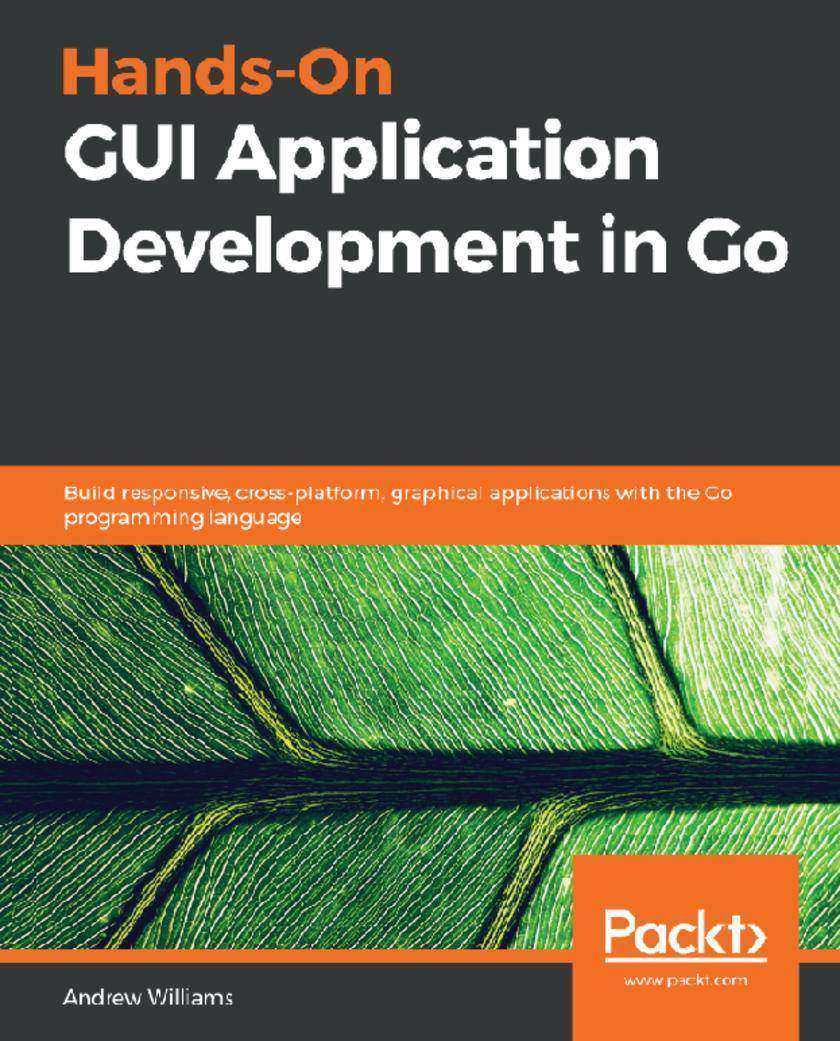
Hands-On GUI Application Development in Go
¥81.74
Discover Golang's GUI libraries such as Go-GTK (GIMP Toolkit) and Go-Qt and build beautiful, performant, and responsive graphical applications Key Features * Conceptualize and build state-of-art GUI applications with Golang (Go) * Tackle the complexity of varying GUI application sizes with a structured and scalable approach * Get hands-on experience of GUI development with Shiny, and labs/ui, Fyne, and Walk Book Description Go is often compared to C++ when it comes to low-level programming and implementations that require faster processing, such as Graphical User Interfaces (GUIs). In fact, many claim that Go is superior to C++ in terms of its concurrency and ease of use. Most graphical application toolkits, though, are still written using C or C++, and so they don't enjoy the benefits of using a modern programming language such as Go. This guide to programming GUIs with Go 1.11 explores the various toolkits available, including UI, Walk, Shiny, and Fyne. The book compares the vision behind each project to help you pick the right approach for your project. Each framework is described in detail, outlining how you can build performant applications that users will love. To aid you further in creating applications using these emerging technologies, you'll be able to easily refer to code samples and screenshots featured in the book. In addition to toolkit-specific discussions, you'll cover more complex topics, such as how to structure growing graphical applications, and how cross-platform applications can integrate with each desktop operating system to create a seamless user experience. By delving into techniques and best practices for organizing and scaling Go-based graphical applications, you'll also glimpse Go's impressive concurrency system. In the concluding chapters, you'll discover how to distribute to the main desktop marketplaces and distribution channels. By the end of this book, you'll be a confident GUI developer who can use the Go language to boost the performance of your applications. What you will learn * Understand the benefits and complexities of building native graphical applications * Gain insights into how Go makes cross-platform graphical application development simple * Build platform-native GUI applications using andlabs/ui * Develop graphical Windows applications using Walk * Create multiplatform GUI applications using Shiny, Nuklear, and Fyne * Use Go wrappers for GTK and Qt for GUI application development * Streamline your requirements to pick the correct toolkit strategy Who this book is for This book is designed for Go developers who are interested in building native graphical applications for desktop computers and beyond. Some knowledge of building applications using Go is useful, but not essential. Experience in developing GUIs is not required as the book explores the benefits and challenges they pose. This book will also be beneficial for GUI application developers who are interested in trying Go.
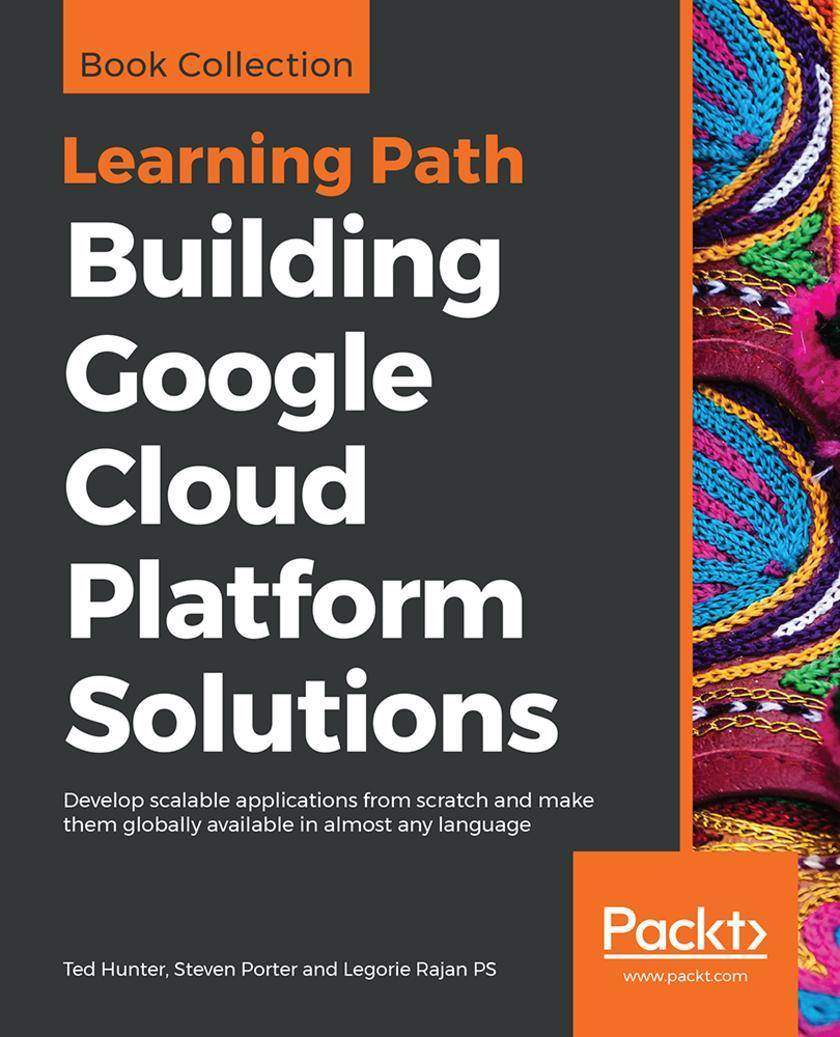
Building Google Cloud Platform Solutions
¥90.46
Build cost-effective and robust cloud solutions with Google Cloud Platform (GCP) using these simple and practical recipes Key Features * Explore the various service offerings of the GCP * Host a Python application on Google Compute Engine * Securely maintain application states with Cloud Storage, Datastore, and Bigtable Book Description GCP is a cloud computing platform with a wide range of products and services that enable you to build and deploy cloud-hosted applications. This Learning Path will guide you in using GCP and designing, deploying, and managing applications on Google Cloud. You will get started by learning how to use App Engine to access Google's scalable hosting and build software that runs on this framework. With the help of Google Compute Engine, you’ll be able to host your workload on virtual machine instances. The later chapters will help you to explore ways to implement authentication and security, Cloud APIs, and command-line and deployment management. As you hone your skills, you’ll understand how to integrate your new applications with various data solutions on GCP, including Cloud SQL, Bigtable, and Cloud Storage. Following this, the book will teach you how to streamline your workflow with tools, including Source Repositories, Container Builder, and Stackdriver. You'll also understand how to deploy and debug services with IntelliJ, implement continuous delivery pipelines, and configure robust monitoring and alerts for your production systems. By the end of this Learning Path, you'll be well versed with GCP’s development tools and be able to develop, deploy, and manage highly scalable and reliable applications. This Learning Path includes content from the following Packt products: * Google Cloud Platform for Developers Ted Hunter and Steven Porter * Google Cloud Platform Cookbook by Legorie Rajan PS What you will learn * Host an application using Google Cloud Functions * Migrate a MySQL database to Cloud Spanner * Configure a network for a highly available application on GCP * Learn simple image processing using Storage and Cloud Functions * Automate security checks using Policy Scanner * Deploy and run services on App Engine and Container Engine * Minimize downtime and mitigate issues with Stackdriver Monitoring and Debugger * Integrate with big data solutions, including BigQuery, Dataflow, and Pub/Sub Who this book is for This Learning Path is for IT professionals, engineers, and developers who want to implement Google Cloud in their organizations. Administrators and architects planning to make their organization more efficient with Google Cloud will also find this Learning Path useful. Basic understanding of GCP and its services is a must.
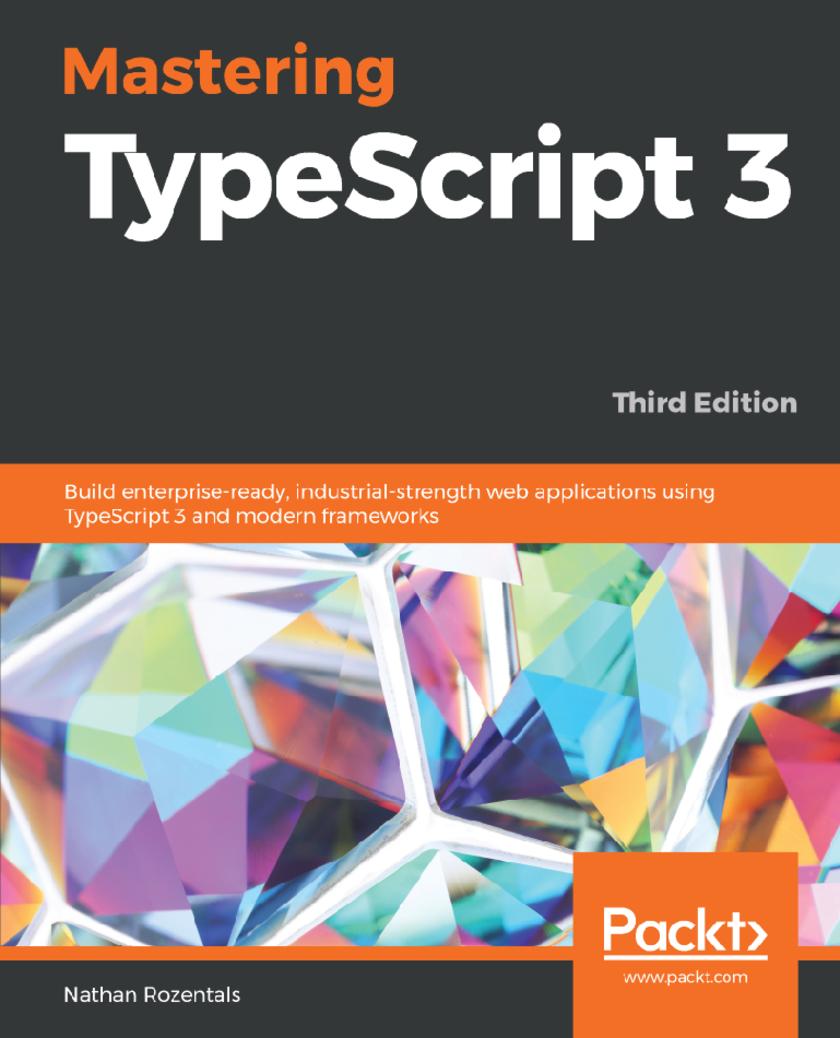
Mastering TypeScript 3
¥90.46
Master the TypeScript language and its latest features. Explore modern application frameworks and utilize industry best practices in TDD, OOP and UI Design. Key Features * Learn the key features of TypeScript 3 and explore advanced language features through in-depth discussions. * Use TypeScript with modern frameworks including Backbone, Angular, Aurelia, React, and Node. * Explore TDD practices, OOP techniques, and industry best practices to create high-quality, modular, and adaptable applications. Book Description TypeScript is both a language and a set of tools to generate JavaScript. It was designed by Anders Hejlsberg at Microsoft to help developers write enterprise-scale JavaScript. Starting with an introduction to the TypeScript language, before moving on to basic concepts, each section builds on previous knowledge in an incremental and easy-to-understand way. Advanced and powerful language features are all covered, including asynchronous programming techniques, decorators, and generics. This book explores many modern JavaScript and TypeScript frameworks side by side in order for the reader to learn their respective strengths and weaknesses. It will also thoroughly explore unit and integration testing for each framework. Best-of-breed applications utilize well-known design patterns in order to be scalable, maintainable, and testable. This book explores some of these object-oriented techniques and patterns, and shows real-world implementations. By the end of the book, you will have built a comprehensive, end-to-end web application to show how TypeScript language features, design patterns, and industry best practices can be brought together in a real-world scenario. What you will learn * Gain insights into core and advanced TypeScript language features * Integrate existing JavaScript libraries and third-party frameworks using declaration files * Target popular JavaScript frameworks, such as Angular, React, and more * Create test suites for your application with Jasmine and Selenium * Organize your application code using modules, AMD loaders, and SystemJS * Explore advanced object-oriented design principles * Compare the various MVC implementations in Aurelia, Angular, React, and more Who this book is for This guide to the TypeScript that starts with basic concepts, and then builds on this knowledge to introduce more advanced language features and frameworks. No prior knowledge of JavaScript is required, although some prior programming experience is assumed. If you are keen to learn TypeScript, this book will give you all of the necessary knowledge and skills to tackle any TypeScript project. If you are already an experienced JavaScript or TypeScript developer, then this book will take your skills to the next level. Learn how to use TypeScript with a multitude of modern frameworks, and choose the best framework for your project requirements. Investigate techniques for Test Driven Development, explore industry-standard design patterns, and learn how to put together a full production-ready TypeScript application.




 购物车
购物车 个人中心
个人中心



